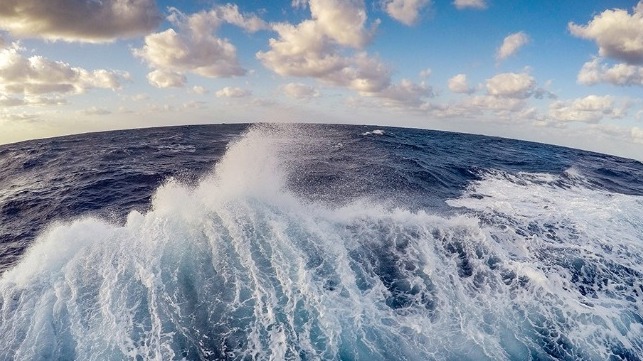Developing a Technology to Produce Hydrogen from Seawater or Brine

An early-stage technology startup company is developing a new process for the production of hydrogen from seawater or brine without the need for desalination. The Baltimore, Maryland-based company, sHYp B.V., is on track for a first commercial pilot before the end of 2021 of the technology that it believes could revolutionize the maritime, offshore wind, and oil and gas industries.
sHYp’s technology produces hydrogen from a process that uses a membrane-less electrolyzer that does not require desalination of the seawater or brine and does not produce toxic waste. The process, which can be 3D printed and is designed for modular generation at the point of use, means the company says that it can be located at ports, offshore to harness surplus electricity generated by wind, solar, and wave farms, and in the future, on board ships.
According to the company, removing the need for a desalination unit reduces the costs, including Capex and Opex, associated with the production of green hydrogen. The process also reduces the need for complex distribution pipelines that are required for the traditional electrolyzer technology.
sHYp is getting a boost in its efforts to develop its electrolyzer from a new joint business development agreement from Pittsburgh, Pennsylvania-based Green Swan Partners, a venture firm focused on businesses that meet a critical industry need while making a positive impact on the environment.
“This technology is a game-changer. It is a vast improvement over existing electrolysis technology as it requires no desalination and results in no toxic waste,” said Lala Faiz, Green Swan partner and sustainability expert. “Green and Blue hydrogen technologies are a necessary and critical tool in our portfolio as we tackle climate change, and we’re extremely pleased to be working with sHYp.”
The technology at the heart of sHYp was developed by an Associate Professor of Chemical Engineering at Columbia University in New York, Daniel Esposito. He began his research into membraneless electrolyzers at Columbia in 2016 and in 2019 sHYp received a grant from PowerBridgeNY, a NYSERDA-supported proof-of-concept center. The company was also included in the maritime accelerator program PortXL.
Under the terms of the Joint Business Development Agreement, sHYp and Green Swan will explore markets, verticals, applications, and geographies to deploy the technology commercially. Once opportunities are identified, the parties will form a joint venture to selectively commercialize the technology on a global scale.
“If you look at the feedstock for this technology as being saltwater and its need for energy to run the electrolyzer, the most natural co-location site would be off-shore and near-shore wind farms,” said Chetan Chothani, partner at Green Swan. “Imagine a wind farm island with sHYp’s technology deployed that can provide offtake for H2, CO2, clean water (a product of H2 combustion), and synthetic fuels derived from reforming H2 and CO2! The technology and its end-use applications are varied, including the production of valuable chemicals.”
In addition to generating H2, sHYp reports that its technology can simultaneously produce other important co-products such as magnesium hydroxide and capture CO2 from seawater or modify water pH for water treatment applications. They believe the technology can be developed allowing for hydrogen to be produced at a cost equivalent to or lower than hydrogen derived from methane.
